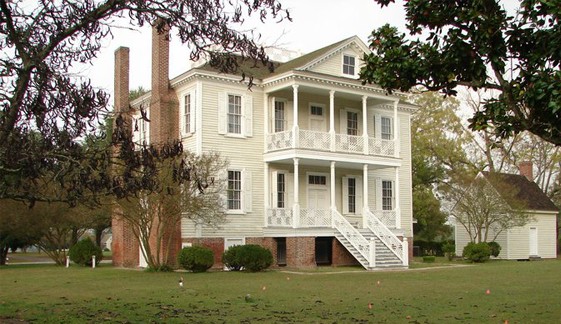Historic Hope Plantation
Introduction
Text-to-speech Audio
Images
Historic Hope Plantation, located in Windsor, NC.

Backstory and Context
Text-to-speech Audio
While the historic Hope Plantation was built in 1803, the land surrounding what would be the Hope Plantation was originally granted to the Hobson family in the 1720’s (Historic Hope Plantation n.d.). Later the Hobson family sold the property to The Stones (Historic Hope Plantation n.d.). Hope plantation was considered self-contained and consisted of “a water-powered grist mill, a still, and as indicated by his inventory, a sawmill, a Blacksmith shop, a cooper’s shop and houses for spinning and weaving” (Historic Hope Plantation n.d.). The lands also included farms which produced many different produces (Historic Hope Plantation n.d.). Along with plants, Stone owned pastures that he housed on Hope plantation (Historic Hope Plantation n.d.). These pastures included, “cattle, sheep and horses, in his woods he raised hogs, while his forests produced timber for the sawmill” (Historic Hope Plantation n.d.). The Hope plantation was proven to be very resourceful under the care of David Stone.
Since David Stone has owned the property, Hope Plantation has undergone a major restoration. The process “began soon after the Bertie County Historical Association was organized in 1950. Now the Plantation can be viewed in tours or used for events” (Wayland L. Kenkins n.d.). After many outreaches and meetings, a budget of $40,000 was set up and a restoration plan was in place (Wayland L. Kenkins n.d.). Over time, the Plantation received more funding for the restoration and was opened to the public for viewing in 1969 (Wayland L. Kenkins n.d.). Later on, Hope Plantation would be the host of many important events (Wayland L. Kenkins n.d.). Now, the location is Considered a National Historic Place as a museum. The Hope Plantation is included in the Historic Albemarle Tour. You can tour the grounds for a small fee. Hope plantation has become an area for many types of events. It is a popular hot spot for weddings, reunions, and meetings (Historic Hope Plantation n.d.).
Sources
2018. Attraction Historic Hope Plantation.https://www.visitnc.com/listing/xbP4/historic-hope-plantation.
n.d. Historic Hope Plantation.http://w on Taylor. 1994. Stone, David.https://www.ncpedia.org/biography/stone-david.
Wayland L. Kenkins, Jr. n.d. The Miracle of Hope – History of the Restoration Project.http://www.hopeplantation.org/outreach/the-miracle-of-hope-history-of-the-restoration-project/.
ww.hopeplantation.org/.Melonie Johnson Taylor. 1994. Stone, David.https://www.ncpedia.org/biography/stone-david.
